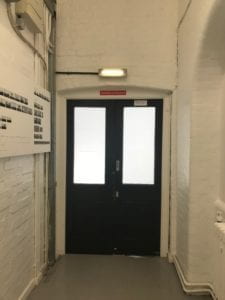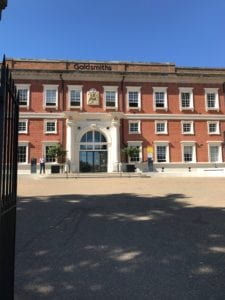Michael Reynold Zalta
Forensic Arhiecture
London, England, UK
I am reporting back at the end of my first week working as a research and scriptwriting intern at Forensic Architecture (FA) in London. Though it has only been three days, I feel like I have become immediately immersed into a group of incredibly smart and savvy artists, scholars, architects, investigative journalists, and animators who work together with speed and seamlessness on some of the most ripe investigations in the field of human rights. It’s truly an exciting and inspiring place to be and these first few days have beyond exceeded my expectations.

What truly amazed me was the sheer amount of projects that are currently being conducted at FA. In fact, the first thing that caught my eye when I walked into the studio was a whiteboard, on it written almost 30 headings of projects that are either in the early stages or later stages of investigation and development.
In terms of the work I am doing, I was assigned to help with an investigation into the Yazidi genocide, which occurred in Iraq in August 2014. FA is working on digitally reconstructing, mapping, and analyzing the ruins of several destroyed Yazidi temple sites around Sinjar Mountain. The project is being conducted in conjunction with Yazda, a human rights and advocacy group representing the plight of Yazidis in Iraq, and a portion of the investigation is set to be exhibited as part of the London Design Biennial (LDB) in September. My tasks on this project primarily consist of conducting research into the history of Yazidis in Iraq and research into the events of the genocide that took place in August 2014 at the hands of ISIS. In the coming weeks I will also help with creating scripts for two videos that will be presented at the LDB Exhibit.
I am very happy to be working on this investigation into the Yazidi genocide which will ideally aid in the production and preservation of material evidence for legal prosecutions for the crimes committed against the Yazidi people. I am interested in further considering the implications of such an investigation and particularly considering how the methods FA employs might help lead to the international proceedings that human rights scholars, advocates, lawyers, and project team members at FA are demanding. I also am excited to see how the project might present an intervention to the ways in which genocides are evidenced, how accountable parties are prosecuted, and how the dialogue between art/exhibition and contemporary human rights practice is one that is increasingly necessary to both raise awareness of issues and create useful forums for victims and representatives to best hold criminal actors accountable.

Despite the excitement I feel for this project, I am still finding my place within the FA team. Not having much of a technical background nor a background in architecture or any digital tools is a challenge, and makes me feel both a bit under-qualified and limited in my ability to play a more hands-on role with the project team. Nevertheless, I understand that this internship placement is meant to be a learning opportunity and that yes, I have a whole lot to learn. I am hopeful that my passion for FA’s work, my research abilities, and my experience as a dramatic writer will enable me to contribute to this important project while also learning necessary new skills.
I guess you’ll just have to tune back in to find out!